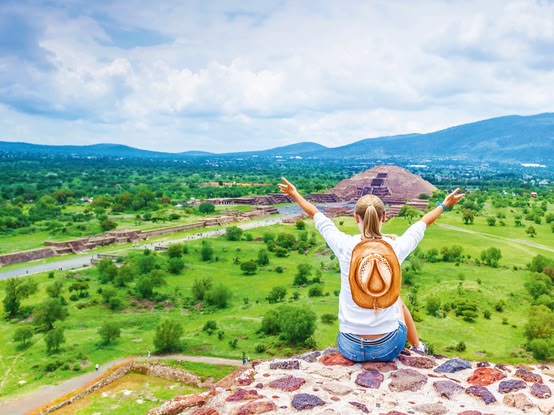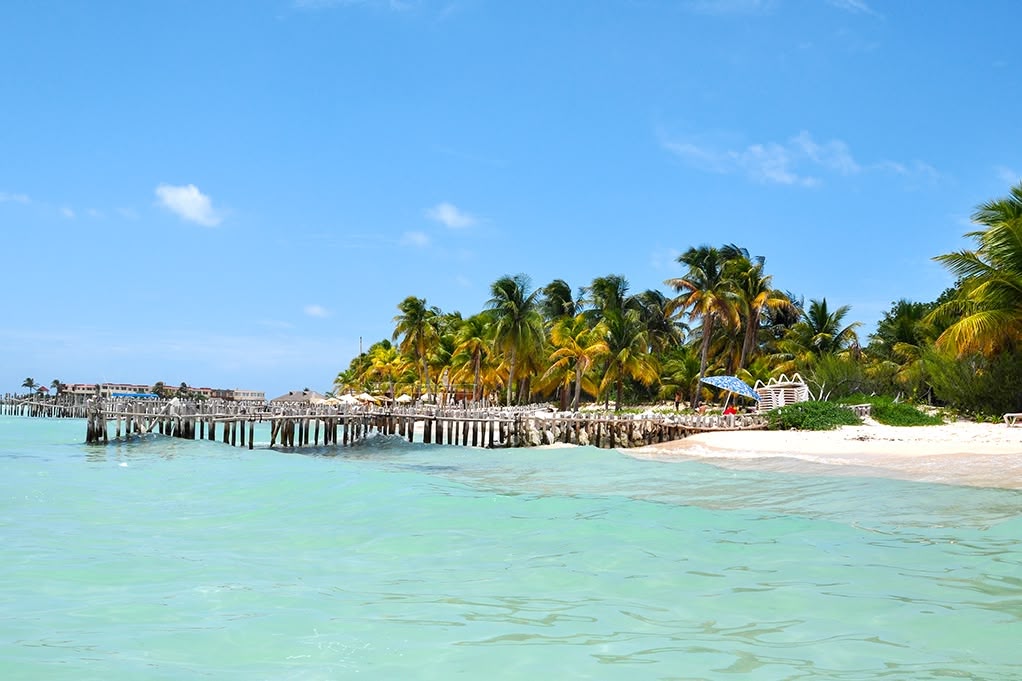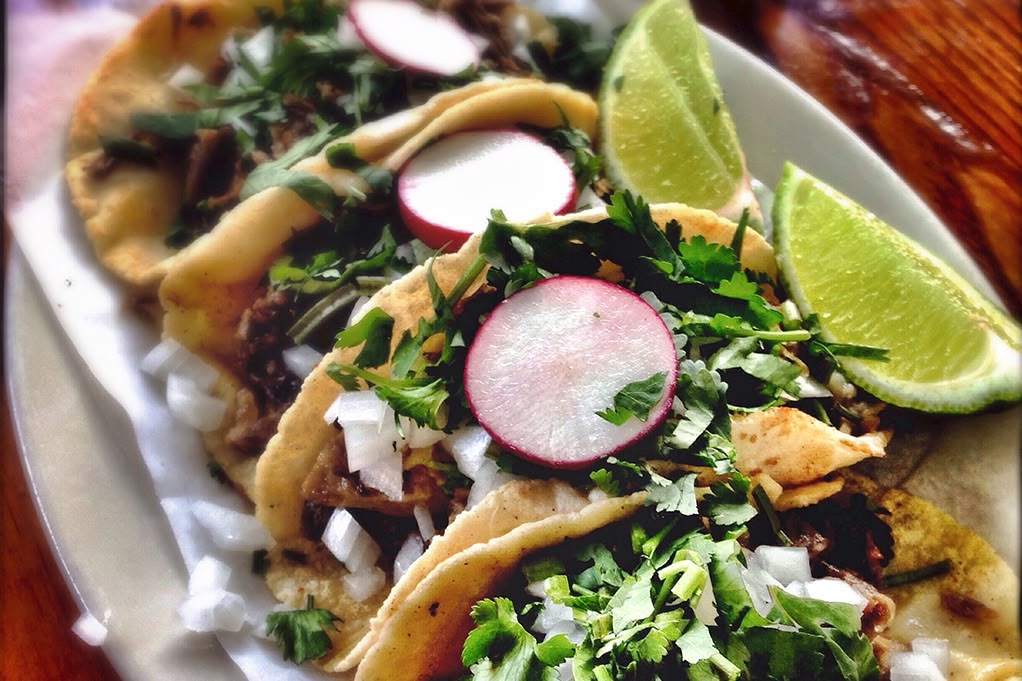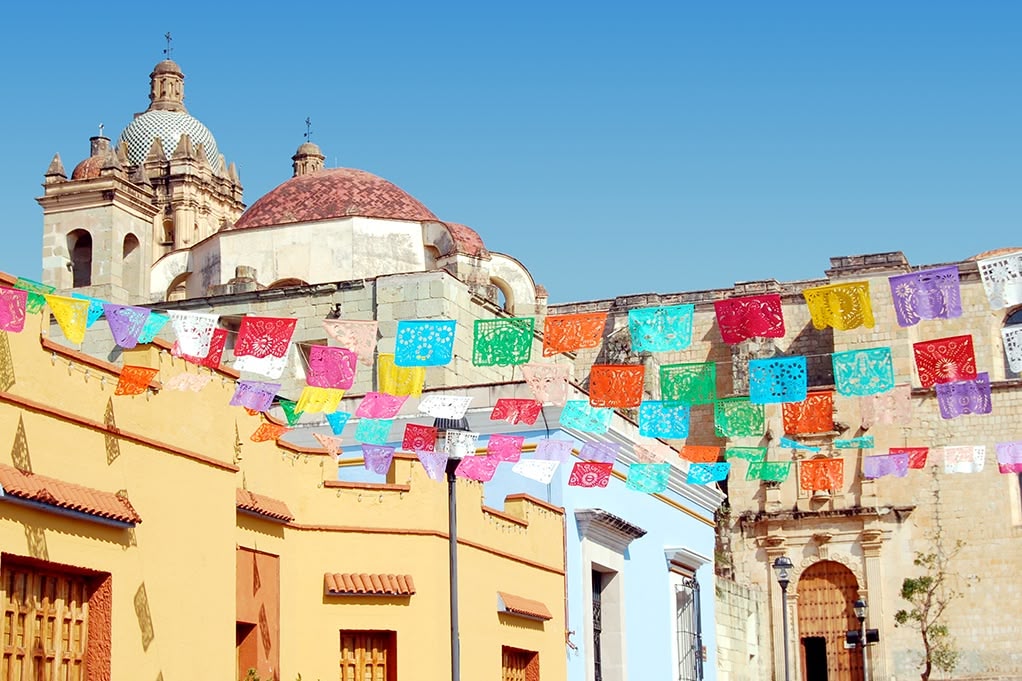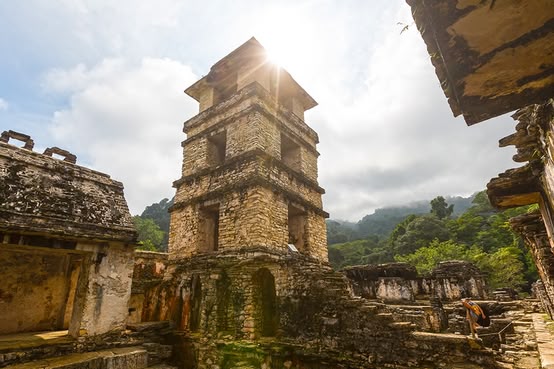Things to know for your trip to Mexico
Whether a beach holiday, cultural trip or adventure trip - Mexico offers a wide range of experiences.
Here you will find important information on topics such as entry, health, transport, currency and more - compact and helpful for a well-prepared trip.
Visa & further entry requirements
German citizens do not require a visa for a tourist stay of up to 180 days. Instead, a tourist card (Forma Migratoria Múltiple, FMM) is issued upon entry.
Valid entry documents for German citizens:
- Passport or temporary passport
- Children's passport
Important: Travel documents must be valid for at least 6 months or for the duration of the stay (if this is longer than 6 months).
This card is required and allows a stay of up to 180 days.
- When entering the country by air, the fee for the FMM is usually already included in the flight price.
- If you enter the country by land, the fee of around 717 MXN (approx. 43 USD) must be paid locally.
Mexico offers good medical care, especially in larger cities, where hospitals and private clinics fulfil international standards. Many doctors speak English. In rural areas, however, medical care can be more limited. Emergency services are available. It is recommended that you take out health insurance when travelling abroad, as the cost of medical services can vary.
Health Mexico
Due to the vast size of the country, its location between two oceans and the very different altitudes, Mexico has different climate zones. In the south, the climate is tropical and humid, while in the north it is predominantly dry and hot, with temperatures of up to 40°C in summer.
There is a rainy season between May and October and the whole of Mexico is generally considered a potential earthquake zone. In addition, Mexico (as well as Central America, the Caribbean and the southern states of the USA) is hurricane season from May to November, when tropical storms, heavy downpours and, as a result, severe flooding can be expected.
Travellers should therefore always follow the regional weather forecasts and heed the advice of the local safety authorities.
The ideal time to travel to Mexico is between the months of November and May, with peak season between December and January, then again between April and May and generally in the week before Easter, which is characterised by higher prices and fully booked hotels.
Best time to travel to Mexico
Useful information at a glance
Mexico is several hours behind Central European Time. Depending on the region and time of year, the time difference to Germany is usually -6 to -7 hours. The country has its own summer time regulations.
Mexico has good international flight connections. The largest airports are in Mexico City, Cancún, Guadalajara and Monterrey. Direct flights from Germany take around 11 to 12 hours.
Flights Mexico
The official currency is the Mexican peso (MXN). 1 peso is divided into 100 centavos. Cash is widely used, especially in rural areas. Credit cards are also widely accepted in cities.
Mexico has a good road network, but traffic in cities can be chaotic. Public transport such as buses and metros are widely available, as are taxis and Uber. Domestic flights are a quick option for longer journeys.
Mexico has a well-developed mobile phone network. There are many public Wi-Fi hotspots for internet access and mobile data is widely available. Sim cards are readily available for tourists.
Telephone & Internet
Everything you need for a safe, relaxed and well-prepared stay in Mexico - from clothing and travel documents to practical tips for travelling.
Population & Language
Mexico has a population of around 128 million, making it the largest Spanish-speaking nation in the world. Around 60 % of the population are mestizos, i.e. descendants from the union of indigenous peoples with Spaniards. Around 10 % are of indigenous origin, the rest are mostly descended from European immigrants.
Spanish is the de facto official language, and 68 indigenous languages are also recognised as national languages.
Around 90 % of Mexicans are Catholic, making Mexico the second largest Catholic country after Brazil. Church and state are strictly separated: there is no state funding or connection to the Vatican, church ceremonies such as weddings or baptisms are paid services. The only official church holidays are Christmas and Easter Monday.
Around 50,000 Mennonites live mainly in the north of Mexico. They lead a Bible-based life, market agricultural products and speak the Low German dialect "Plautdietsch" as well as Spanish. Their traditional clothing, blonde hair and blue eyes are striking.
Mexico's landscape is largely made up of highlands, mountains and volcanoes. The volcanoes Citlaltépetl and Popocatepetl to the south of Mexico City are the highest mountains in the country at over 5,000 metres. The longest river in Mexico is the Rio Grande in the north.
The flora in Mexico is very rich in species. Large quantities of our food, such as maize, potatoes, tomatoes, vanilla and tobacco, come from Mexico. Cacti, yucca palms and agaves grow in the desert regions. Central Mexico is characterised by highland plains and steppe areas. On the coasts there are kilometres of sandy beaches with many palm trees. South America's animal world is also very large and rich in species. Mexico's lowlands are home to exotic animal species such as jaguars, monkeys and pumas. The highlands are home to black bears, lynxes, badgers, sloths, raccoons and deer.
Mexican cuisine combines many flavours - spicy and mild, sweet and sour, tart and delicate. It consists of regional specialities: southern Mexico loves aromatic stews and tropical fruits, northern Mexico is known for meat dishes, central Mexico for corn, beans and poultry. The Yucatán Peninsula offers speciality dishes such as cochinita pibil - pork stewed in banana leaves.
Typical dishes include huevos rancheros for breakfast, a multi-course lunch from 2 pm and late evening meals. To experience the variety, it is worth visiting fondas, taquerías and street stalls.
Mexico's national drink is tequila, made from the blue agave whose honey water (aguamiel) is fermented.
Mexico has a rich and varied history. Long before the arrival of the Spanish, advanced civilisations such as the Olmecs, Maya and Aztecs flourished here. In 1521, the Aztec empire was conquered by the Spanish under Hernán Cortés, and Mexico became part of the Spanish colonial empire.
After more than 300 years of colonial rule, the country gained its independence in 1821. This was followed by phases of political upheaval, revolutions and reforms. Today, Mexico reflects an exciting mixture of indigenous heritage, colonial past and modern identity.
Discover magical Mexico
On the trail of the Maya - what you will experience in Mexico is the fascinating Mayan culture, which is deeply rooted in the country's history. It is represented everywhere. Whether you travel to Palenque, Tikal or Chichén Itzá - or go on holiday on the"Riviera Maya" and relax on the beach - you will always find evidence of this ancient, highly developed culture of the indigenous people of Mexico. Natural spectacles such as the Laguna de los Siete Colores(Bacalar Lagoon) or the fossilised waterfall Hierve el Agua should not be left out - or even the culinary highlights of Oaxaca. There is so much to see in the land of the Maya.
Can't decide on a particular route? What is most worth seeing, what suits your ideas? With a hire car or a guided tour? We have listed the highlights of the country and the most interesting places for you and compiled information for you. Take a look at our page for highlights in Mexico. Here you can also find out which round trips will take you to the highlights you want to see.
Plan your dream holiday
Start planning your trip today - it only takes 2 minutes!
Don't miss the chance to make your dream trip a reality! Contact our experienced travel consultants now and let them inspire and advise you for your trip. Take the first step towards your unforgettable adventure!
*Current situation on site
Please note that the local security situation can change at any time. We therefore recommend that you check with the Foreign Office about the security situation in the country you are travelling to.

